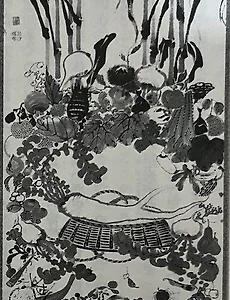 교토의 식문화 -4장 교토의 구심력과 교토 상표
교토의 요리점 교토란 이름이 상표선물 가게나 특산물 가게에 가면, 상품명의 머리에 '京'이란 한 글자를 붙인 상품이 참으로 많다. 교-부채, 교-구이, 교-야채, 교-절임 등등. 도시에 나오면 교-요리, 교-회식 또는 교-가이세키 등의 간판도 자주 볼 수 있다. 최근에는 교-서양과자의 간판을 단 가게도 나타났다. 교마치야京町屋, 교마京間 등이라는 것도 있다. 교마란 건물 치수의 규격 중 하나로, 교토를 비롯해 간사이의 그것은 도쿄 등의 그것보다 조금 길다. 즉, 똑같은 6첩 방이라도 교토의 그것은 도쿄의 그것보다 넓다. 교마는 별도로 하고, 대부분은 京이란 한 글자를 덧붙임으로써 품질이 높다는 것, 오랜 역사를 지녔다는 것 등을 암묵적으로 주장하고 있는 것 같다고 생각한다. 즉 '京'이란 한 글자는 그것..
2024. 8. 25.
교토의 식문화 -4장 교토의 구심력과 교토 상표
교토의 요리점 교토란 이름이 상표선물 가게나 특산물 가게에 가면, 상품명의 머리에 '京'이란 한 글자를 붙인 상품이 참으로 많다. 교-부채, 교-구이, 교-야채, 교-절임 등등. 도시에 나오면 교-요리, 교-회식 또는 교-가이세키 등의 간판도 자주 볼 수 있다. 최근에는 교-서양과자의 간판을 단 가게도 나타났다. 교마치야京町屋, 교마京間 등이라는 것도 있다. 교마란 건물 치수의 규격 중 하나로, 교토를 비롯해 간사이의 그것은 도쿄 등의 그것보다 조금 길다. 즉, 똑같은 6첩 방이라도 교토의 그것은 도쿄의 그것보다 넓다. 교마는 별도로 하고, 대부분은 京이란 한 글자를 덧붙임으로써 품질이 높다는 것, 오랜 역사를 지녔다는 것 등을 암묵적으로 주장하고 있는 것 같다고 생각한다. 즉 '京'이란 한 글자는 그것..
2024. 8. 25.